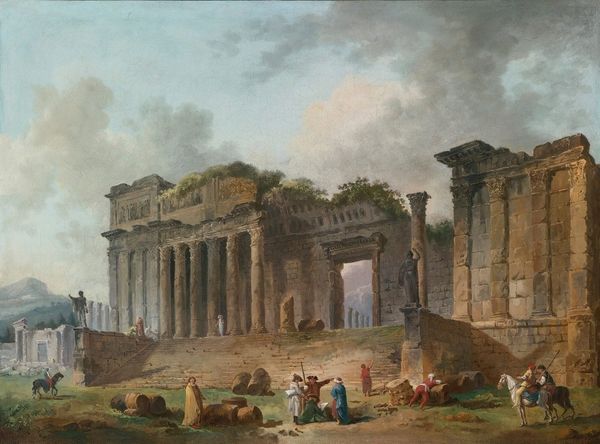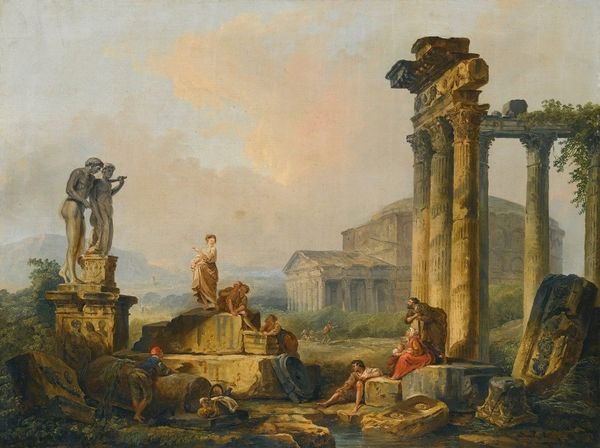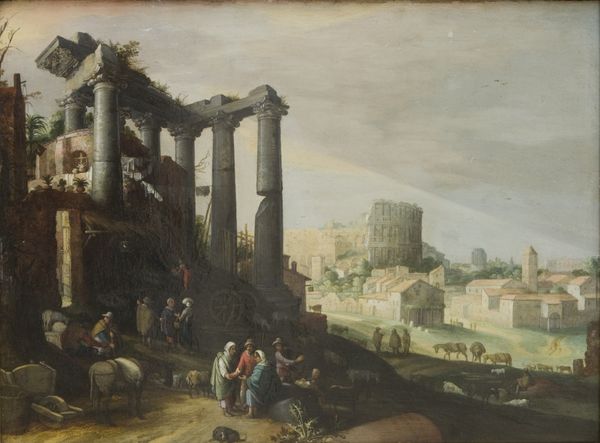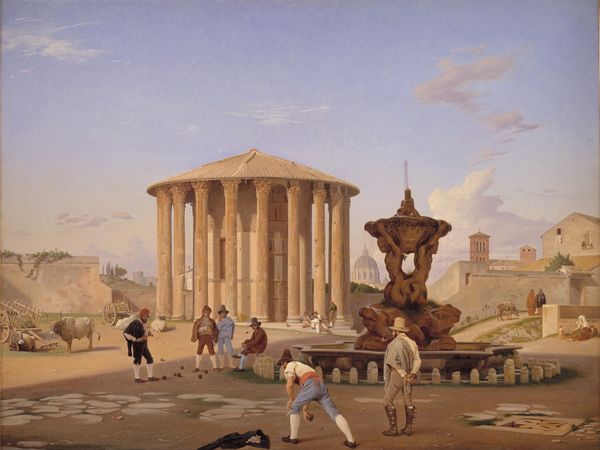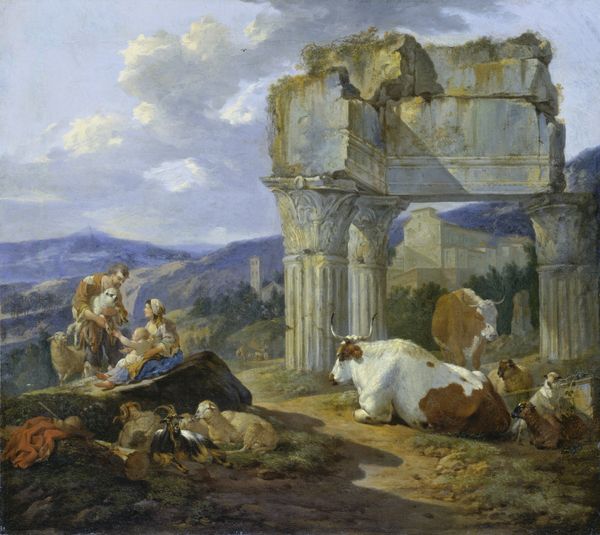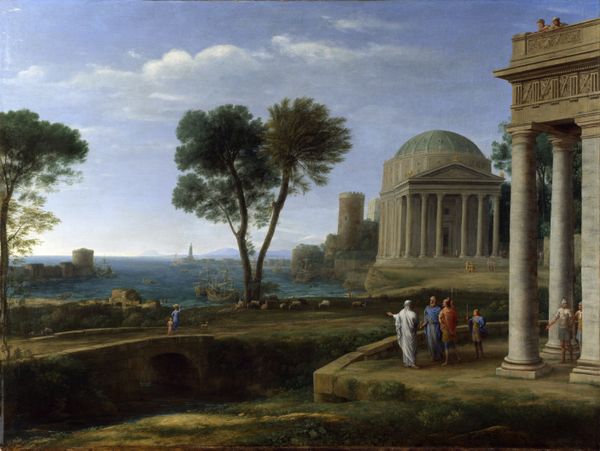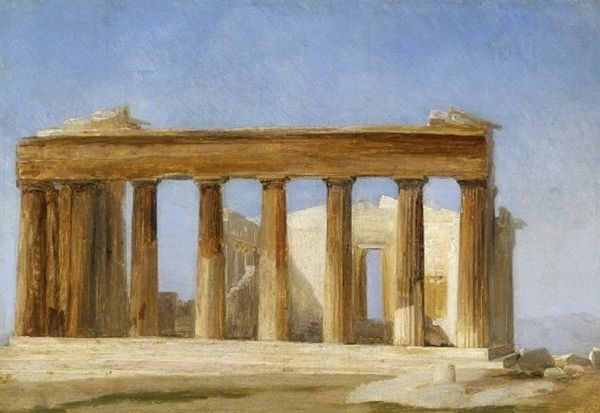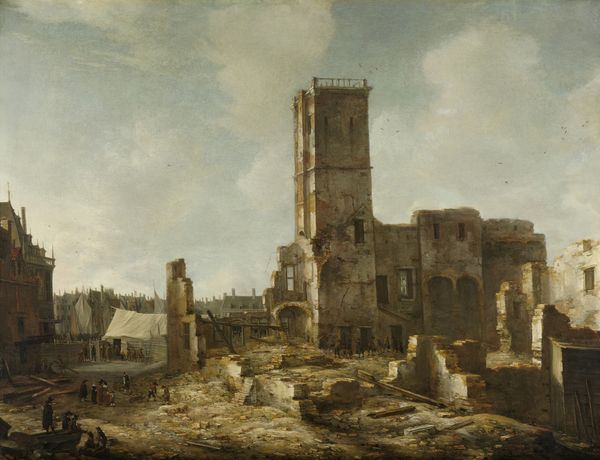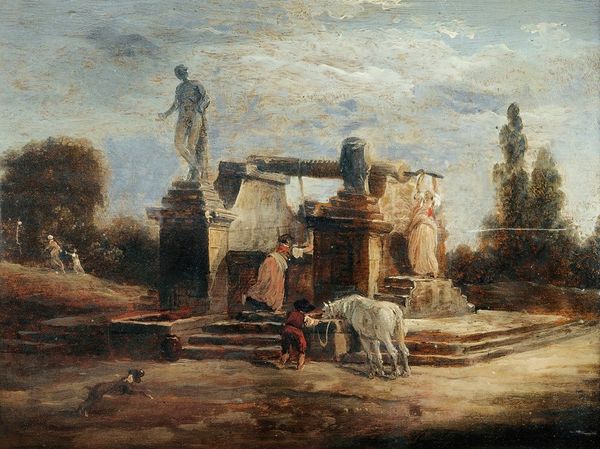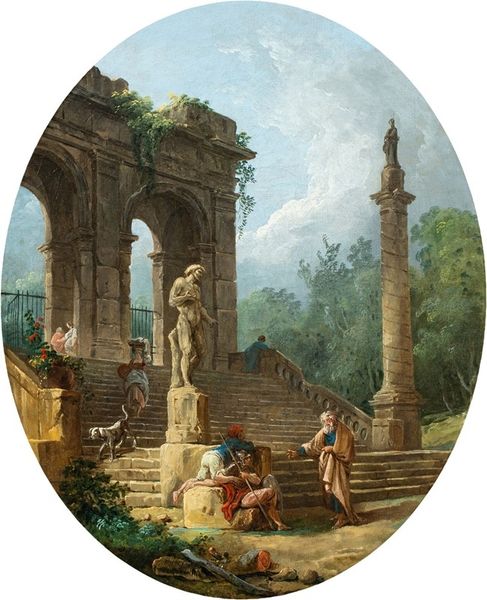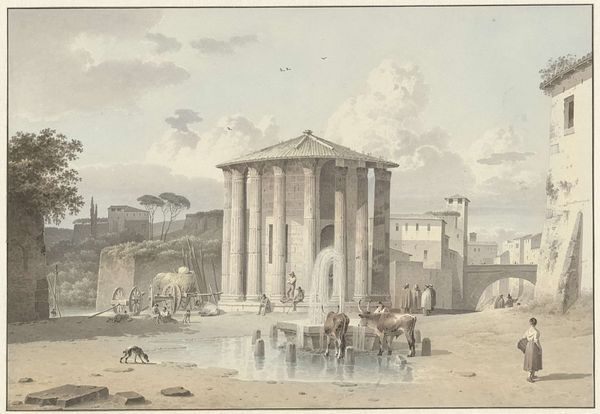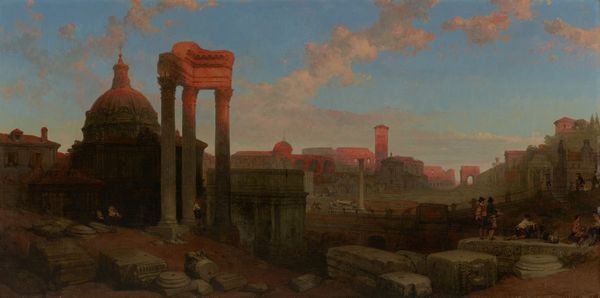
painting, oil-paint
#
16_19th-century
#
painting
#
oil-paint
#
greek-and-roman-art
#
landscape
#
oil painting
#
romanticism
#
cityscape
#
academic-art
#
realism
Dimensions: 53 x 78.5 cm
Copyright: Public domain
Editor: This is Rudolf von Alt's oil painting, "The Temple of Vesta in Rome" painted sometime in the 19th century. I am struck by the contrast between the detailed classical architecture and the mundane, almost chaotic, everyday life happening around it. What can you tell me about this intersection? Curator: This painting stages a very particular kind of encounter. Alt positions the ancient temple, a symbol of enduring power and a romanticized past, amidst the daily lives of ordinary Romans. Consider, though, *whose* daily lives are represented? The presence of working-class figures, shepherds with their flock, raises questions about class and access to history and heritage. Is this a democratic vision, or is it more about the artist's, and the viewer's, detached observation of the ‘authentic’ Roman life? Editor: That's a fascinating point. It makes me consider how the painting might be viewed differently depending on the viewer's own background. Curator: Exactly. And how the artist's background shapes his perspective. As an artist trained in academic traditions, he's certainly aware of the power dynamics inherent in depicting a city's historical sites alongside its contemporary inhabitants. Are the classical structures simply a scenic backdrop, or are they implicated in the present socio-economic reality depicted? Consider the light, and the detailed realism: what does this visual treatment convey about how we should interpret this relationship between past and present? Editor: I hadn't thought about the artistic choices reinforcing certain narratives. The detailed rendering almost romanticizes the poverty, doesn’t it? Curator: Precisely! The 'realism' serves not just to document, but to aestheticize, potentially distancing the viewer from the harsher realities of 19th-century Rome and perhaps preserving specific romantic ideas of the relationship between idealized classical civilizations and the present. What implications could that have on how viewers internalize the depicted dynamic? Editor: It gives me a lot to think about how artistic choices can contribute to shaping social and political perspectives. Thanks for untangling this! Curator: My pleasure! Art history invites us to question, not just to see. Keep that curiosity alive.
Comments
No comments
Be the first to comment and join the conversation on the ultimate creative platform.
